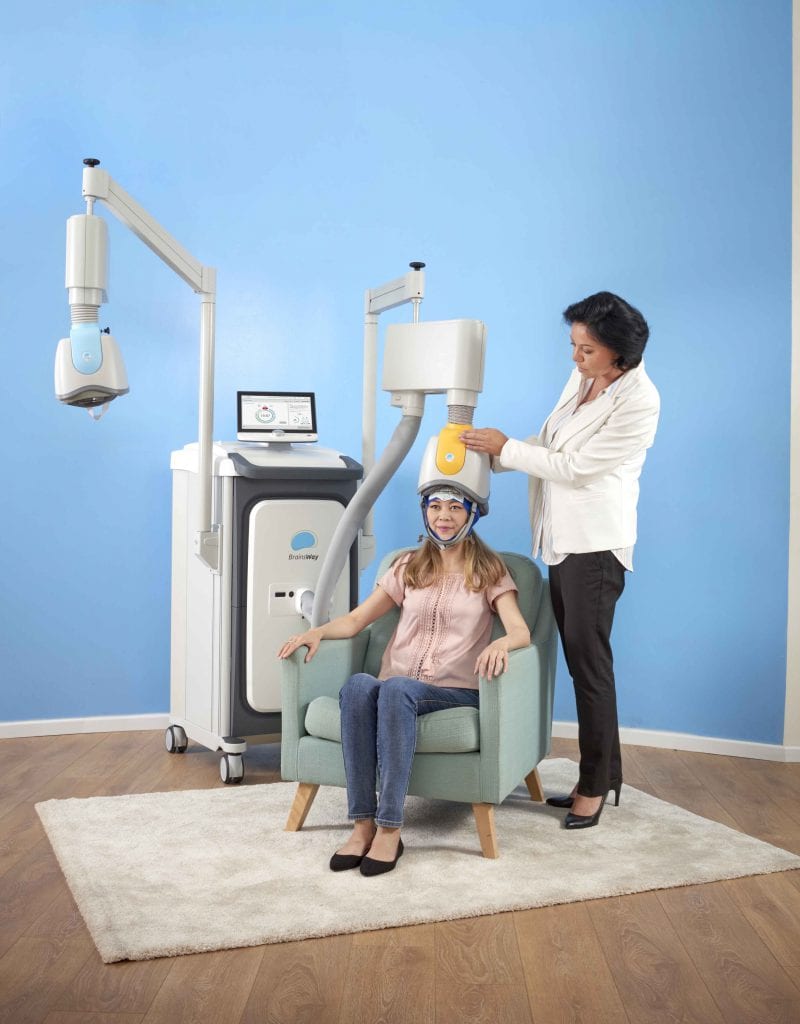Obsessive-compulsive disorder, or OCD, is an anxiety-centered mental health condition in which unwanted, aversive thoughts drive the individual to carry out repetitive behaviors as a stress-reducing mechanism, only to have these rituals eventually add to their stress. Though the condition disrupts the normal functioning of many individuals across the globe, there are currently more obsessive-compulsive disorder treatment options than ever before.
At present, both SSRIs and CBT are considered first-line therapies for OCD, both proven to alleviate the symptoms of this mental health condition. However, with scientific advances, more and more patients are choosing non-invasive therapies such as Deep TMS, which offer relief while only causing minor, less severe side effects.
Non-Invasive OCD Treatments: Lower Risk with Proven Results
Non-invasive treatments offer several advantages over surgical options:
It is therefore unsurprising that non-invasive therapies are garnering interest, with several options, in particular, gaining professional acceptance.
CBT: A first-line treatment for OCD, cognitive behavioral therapy is a type of talk therapy that is considered more goal-focused than psychodynamics. Led by a trained mental health professional, CBT examines the thoughts, feelings, behaviors and physical reactions that are symptomatic to OCD. This is done to familiarize the patient with the specifics of their condition, as they gradually learn to find some relief from it.
Several types of therapy have branched out of CBT, most notably acceptance and commitment therapy (ACT), and exposure and response therapy (ERP). ACT aims to promote openness and a more flexible approach in the patient, when reacting to OCD symptoms. Additionally, ACT looks to help them define how they wish to commit to their own well-being, and then follow through on their goal.
Exposure and response therapy (ERP) has also been found to effectively treat OCD. ERP works by gradually exposing the patient to stimuli they associate with OCD-inducing anxiety. They are then encouraged to refrain from compulsively reacting to the stimuli, as over time they learn how to manage their OCD-related, anxiety-inducing behavior.
TMS: Transcranial Magnetic Stimulation works by sending out a series of electromagnetic pulses from a figure-8-shaped, handheld device. The pulses are used to regulate the neural activity of brain structures relevant to the targeted mental health condition.
Though it is used to treat mental health disorders, this original, standard form of TMS does hold certain limitations: first, unlike Deep TMS, standard TMS has not received an FDA-clearance status to treat OCD.
Second, the relatively narrow scope of the TMS’s figure-8 coil means that only a few brain structures can be reached with each pulse. For this reason, standard TMS can suffer from targeting issues and may miss relevant brain structures.
Lastly, standard TMS has trouble directly stimulating deeper structures in the brain, which can also decrease its efficacy.
Deep TMS: Deep Transcranial Magnetic Stimulation, or Deep TMS, is an advanced form of the standard, figure-8 TMS treatment that aims to answer some of the issues raised by its predecessor. Deep TMS is the only non-invasive device that is FDA-cleared to treat OCD.
Like standard TMS, Deep TMS is a non-invasive treatment that utilizes a magnetic field to safely regulate the neural activity of brain structures shown to be associated with OCD, such as the anterior cingulate cortex. Deep TMS does not require anesthesia and can be incorporated into one’s daily routine. Deep TMS does not cause any adverse long-lasting side effects.
Unlike standard TMS’s figure-8 design, Deep TMS uses its own, patented H-Coil technology, which is held inside a cushioned helmet fitted onto the patient’s head. The H-Coil’s magnetic fields can reach wider areas of the brain and can also directly stimulate deeper brain structures—with both of these features contributing to the treatment’s efficacy while maintaining a high level of safety. Additionally, as a non-invasive treatment, Deep TMS can also be combined with any other form of therapy in treating OCD.
Due to all of the above features, Deep TMS’s efficacy was confirmed in 2019, in a multicenter, sham-controlled study published by the American Journal of Psychiatry: the study found that regulating the functions of “the medial prefrontal cortex and anterior cingulate cortex significantly improved OCD symptoms.”
tDCS: Transcranial Direct Current Stimulation, or tDCS, uses a small-intensity electric current whose intensity stays constant over time.
tDCS has been widely studied as a treatment for depression or schizophrenia, with only a handful of studies conducted on OCD. Nonetheless, the technique has shown promise as a possible treatment for OCD, with symptom reduction following treatment lasting anywhere between one-to-seven months.